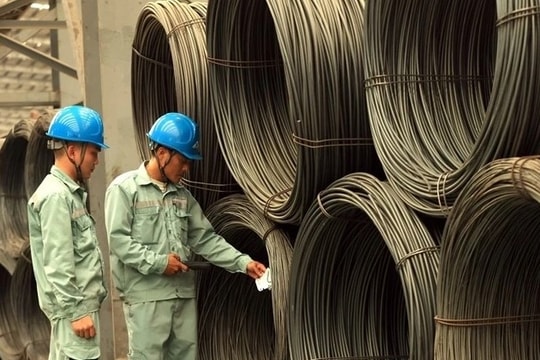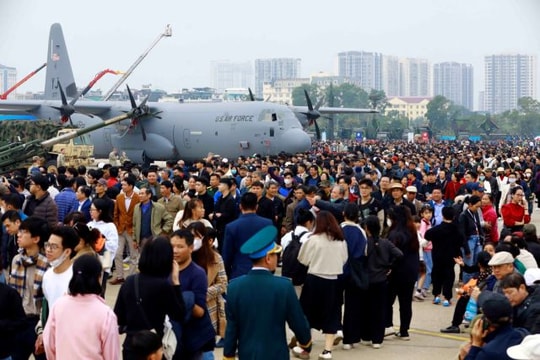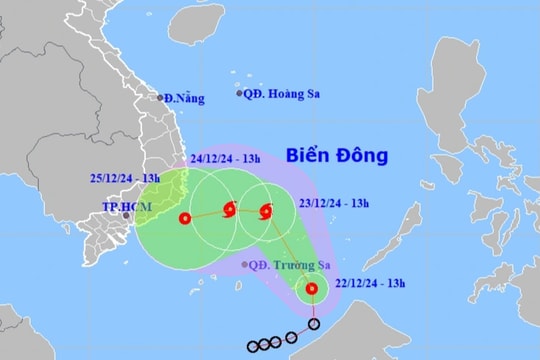 |
| A staff on a high quality train SE21/22 connecting HCM City and Đà Nẵng.— VNA/VNS Photo Tiến Lực |
HÀ NỘI — The route for the North-South high-speed railway has been studied and selected by consultants to be as short as possible, adhering to several factors that align with national and local planning requirements.
According to the Ministry of Transport, the chosen route also meets technical requirements for a maximum gradient and curve radius that will ensure a smooth ride for passengers.
It must also minimise the train's passage through environmentally sensitive areas, historical landmarks and military lands, limit the amount of land clearance required by avoiding densely populated areas, and reduce impacts on existing structures.
The route also has to ensure connectivity between the east and west corridors as well as rail links to China, Laos and Cambodia, the Ministry of Transport said.
Since 2018, the ministry has worked with international consultants to develop three route options. All three options have been analysed and evaluated, and an agreement has been reached with local authorities on the straightest and shortest route.
The selected route option was unanimously agreed upon by all 20 provinces and cities through which the high-speed railway will run.
Consultants were then directed to refine the project documentation. Following a review, the total length of the route was reduced by four kilometres, from 1,545km to 1,541km.
The project's route has already been updated in provincial planning documents and approved by the Prime Minister.
In the feasibility study phase, the ministry will continue to direct consultants to review and adjust the route to ensure optimal alignment, the ministry said.
Aligning with local plans
The high-speed railway line will feature 23 passenger stations designed in accordance with existing conditions and local development plans.
Stations will be located in central economic and political areas in each locality, or in proximity to urban centres, focusing on areas with potential for new development to effectively utilise land resources, ensure convenient connections with public transport systems and optimise infrastructure and service efficiency.
The ministry will also relocate Mương Mán station in the south central coastal province of Bình Thuận about four kilometres north of its previous site, following suggestions from the province.
In response to the National Appraisal Council's feedback, potential station locations will also be examined in the feasibility study phase, particularly in localities with sufficient urban population and transport demand.
The space between stations will ensure compliance with technical requirements for operations, with local authorities leading the investment in station construction under the Public-Private Partnership (PPP) model.
As for cargo transport, taking into account comments from the National Appraisal Council, the ministry has ordered consultants to review and propose the establishment of five freight stations at major logistics hubs connecting with Hà Nội and HCM City. These include major seaports, coastal economic zones and the railway system serving international freight transport, facilitating logistics for national defence and security while also meeting economic and security integration objectives.
In Hà Nội, in response to recommendations from the People's Committee of Hà Nội, the freight station in the Ngọc Hồi area will be moved to Thường Tín.
During the feasibility study phase, the ministry will also direct the investor and consultants to continue collaborating with local authorities to review and adjust the route and station locations if applicable, especially those that offer advantageous connections to major transport hubs and economic zones -- including the segment through the northern province of Nam Định.
The ministry has also indicated that for the preliminary feasibility study, a development space of 250-300ha is planned for each passenger station, excluding Thủ Thiêm station.
Under the plans, each station has three functional areas: a direct service area for passenger arrivals and departures, with parking occupying up to eight hectares -- similar in scale to railway stations in China, Indonesia, South Korea and Japan -- a service and commerce area of 10-15ha, and an urban service area of 250-300ha.
The project will only use public capital investment for areas directly serving passenger functions.
Commercial development and Transit Oriented Development (TOD) initiatives will be driven by local authorities attracting private investors, with specific scales determined according to local conditions, encouraging large-scale planning.
As a major railway hub in Hà Nội, Ngọc Hồi station will integrate the city’s urban railway and national railway lines, with a planned area of approximately 250 hectares. Thủ Thiêm station will also integrate urban rail lines, with an expected size of around 17ha.
Each freight station will occupy around 24.5ha.
During the feasibility study phase, the ministry has instructed the investor and consultants to review and propose specific locations and sizes for stations that meet all necessary requirements, such as including square and multi-modal connection facilities.
Regarding freight operations on the high-speed railway line, the ministry explained that for the feasibility study the design speed for passenger trains will be 350km/h, while it will be 160km/h for freight trains.
Global experience shows that in countries with newly operational railway lines, operational speed is typically around 90 per cent of the design speed.
Therefore, transport officials expect that in the initial phase, the maximum operational speed will be 320km/h for passenger trains and 120km/h for freight trains.
When the railway is up and running, efforts will be made to assess and potentially enhance maximum operational speeds. — VNS























